Habitat and fish added to Arkansas waters by the truckload in 2023
ON 01-10-2024
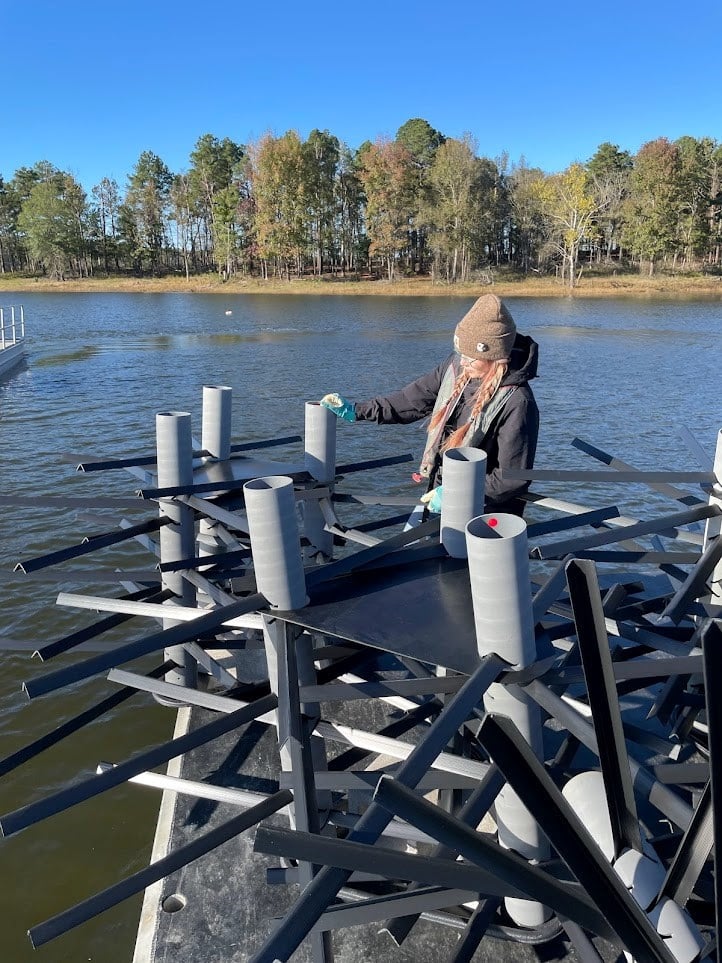
LITTLE ROCK — Arkansas Game and Fish Commission biologists created nearly 200 semi-truckloads of fish attractors in 2023, and hatchery trucks kept up the pace, pumping more than 9.1 million gamefish and baitfish into Arkansas waters to enhance angling efforts.
According to Matt Schroeder, fisheries district coordinator for the AGFC, habitat crews placed or enhanced more than 447 fish attractor sites last year with a variety of materials.
“The type of attractor ranged from bunches of Christmas trees and artificial PVC structures to giant piles of cedars and commercially made mega reefs from Mossback Fish Habitat,” Schroeder said.
With an average footprint of about 12 feet by 12 feet, standing about 12 feet tall, that totals roughly 772,416 cubic feet of fish attractors placed in Arkansas lakes, enough to fill nearly 200 semi-truck containers.
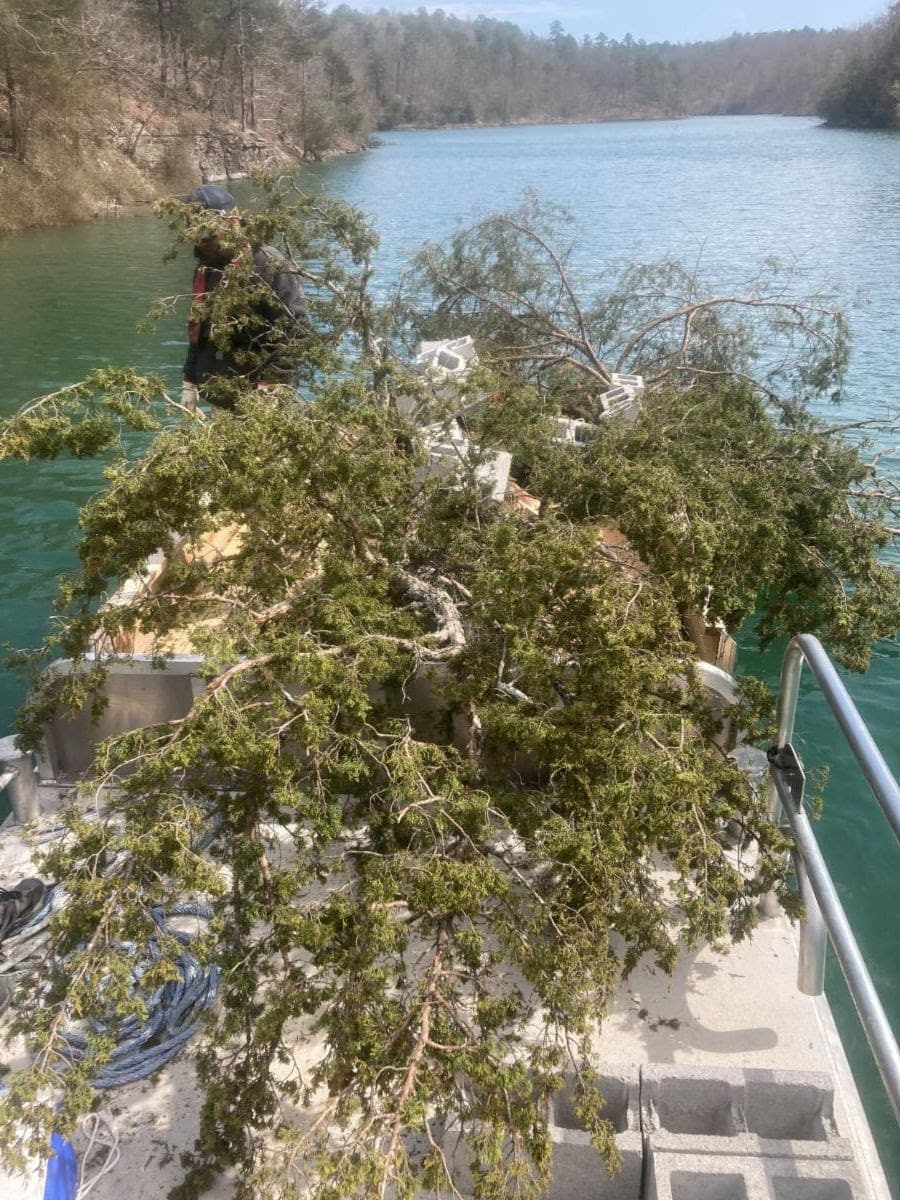
Brush wasn’t the only habitat that was added to Arkansas lakes last year, either. Biologists also spent a lot of effort bringing life to lakes through vegetation projects. DeGray Lake and Greers Ferry Lake saw the continued use of floating “Arkansas cubes” filled with coontail to promote this helpful aquatic vegetation. DeGray, in particular, has seen notable increases in aquatic vegetation in the last few years, and AGFC fisheries biologists hope to expand the program even further in 2024 in a new partnership with the U.S. Corps of Engineers.
“We also planted water willow in two pools of the Arkansas River to continue adding this valuable aquatic cover in areas where current had scoured it away,” Schroeder said.
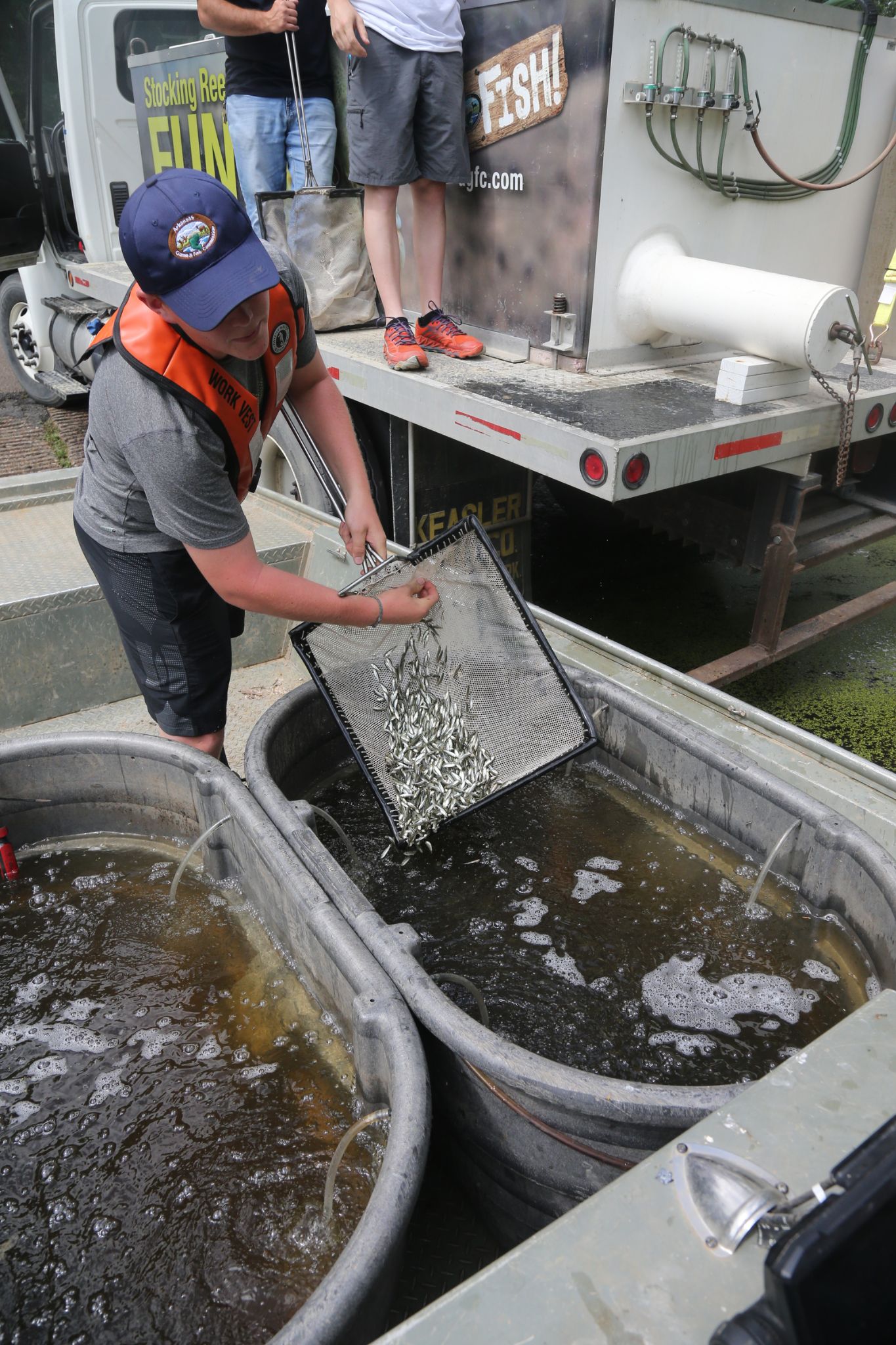
Basstankers deliver
Nearly 2.5 million black bass were stocked last year from AGFC hatcheries, with Florida largemouth bass taking the top position with 1.99 million produced. Although most lakes in Arkansas can produce more bass in any given year than the entire AGFC hatchery system, the goal of bass stockings isn’t necessarily to add extra fish to catch.
“When we’re stocking Florida bass, we’re focused on changing the genetics of a lake’s population to increase trophy potential,” Vic DiCenzo, AGFC assistant chief of fisheries, said. “We have plenty of bass in most Arkansas lakes, and these Floridas will actually displace other bass that would have been there. We’re looking for those Floridas to grow and spawn with the population already in the lake and increase growth potential.”
A handful of Arkansas fisheries still need an occasional boost in bass numbers, so hatcheries still raised 396,557 northern strain largemouth to stock in areas where biologists saw issues with reproduction.
“The Arkansas River is a good example of a fishery that still can benefit from supplemental stockings of northern largemouth bass,” DiCenzo said. “Current in high flow years can really affect the spawn in some pools that don’t have sufficient backwaters. Previous research has shown that our stocked fish do make up a noticeable percentage of year-classes of fish when that occurs and help bring the river bass populations back a little quicker when conditions are favorable.”
Northern largemouths also are stocked in lakes that have been renovated when the lake is not conducive to Florida bass stockings.
“Lake Poinsett is too far north for Florida bass to thrive, so northern bass were stocked there to help jump-start the population after that renovation was complete,” DiCenzo said.
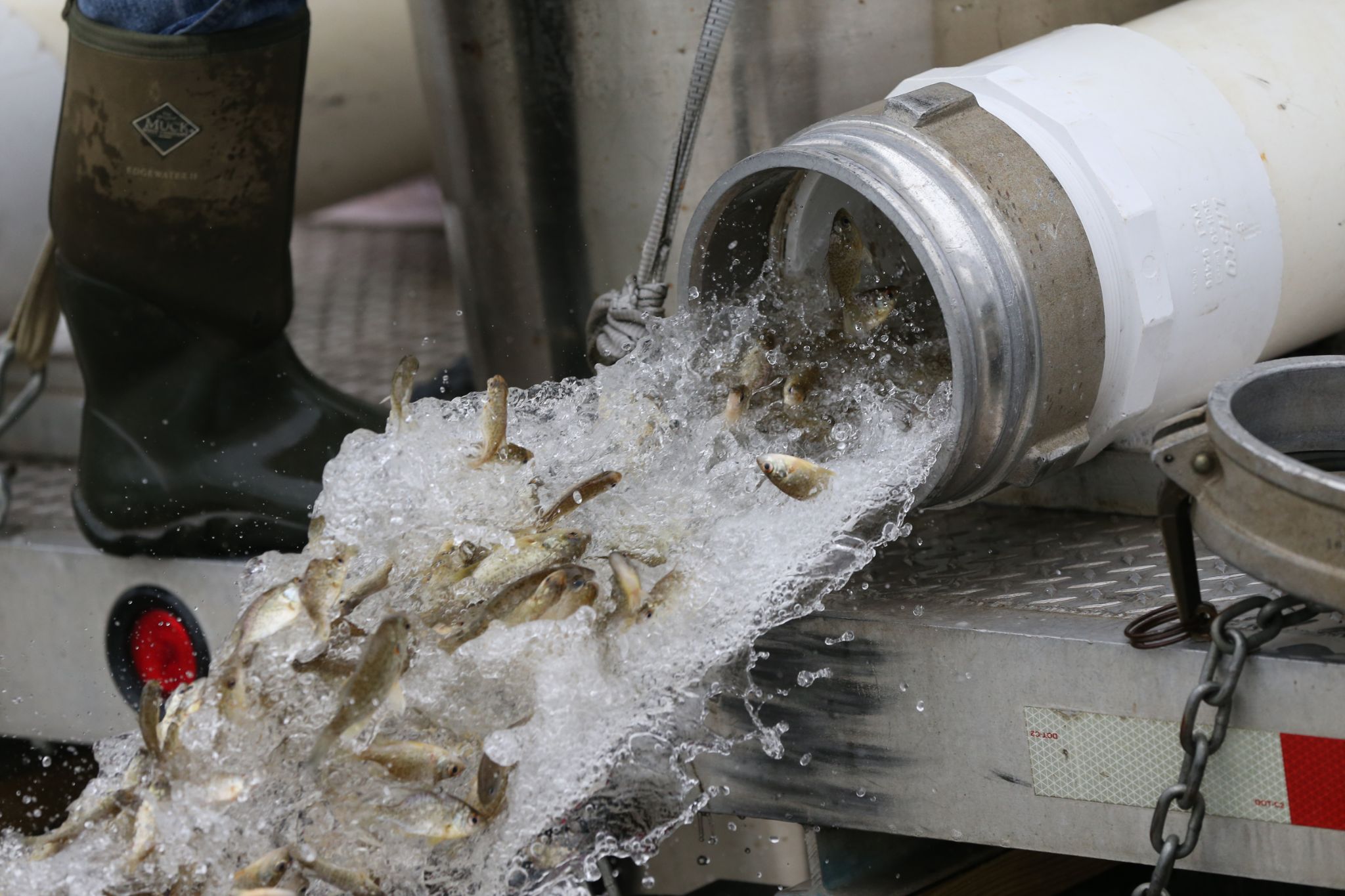
Setting the table
AGFC hatcheries continue to crank out the fish food for those budding bass, too. According to Jason Miller, AGFC assistant chief over the agency’s fish culture section, they produced 1 million threadfin shad, 2.05 million fathead minnows and 114,000 golden shiners to boost the forage base of lakes around the state. An additional 933,095 bluegill and 219,623 redear sunfish were stocked. These two species not only serve as forage for bass and other gamefish, but also offer excellent angling targets for people looking to dip a cricket in their local lake.
“Combined, you’re looking at 4 million or so forage fish for bass, crappie and other gamefish to chase,” Miller said. “And most of these species are prolific spawners, so the impact to the food chain is much greater than the original numbers we stock.”
Trout-tastic numbers
Even with the Jim Hinkle State Fish Hatchery undergoing major construction last year, AGFC staff were still able to stock 571,712 catchable-size rainbow trout. Miller says good things are on the horizon now that the hatchery is back up to full speed.
“I talked to the hatchery manager just the other day and he said they have more than 700,000 trout on site right now,” Miller said. “Before the renovation, they were only able to hold 450,000 or so. They also were able to use their own hatch house at the facility for the first time in a few years, so they’re really getting up to speed quickly to get more trout out there for Arkansas anglers.”
Catchable-size trout from the AGFC’s only cold-water hatchery are stocked at 43 locations in Arkansas, including the Family and Community Fishing Program locations, the White, Norfork and Spring rivers. Federal hatcheries add to that number tremendously, stocking the Norfork, White, Greers Ferry and many seasonal tailwater fisheries in the state.
“If you add in the numbers from the Federal hatcheries, we’re talking 1.9 million rainbow trout in the state that were ready to fight from the day they hit the water,” Miller said. “And don’t forget all the naturally reproducing brown trout for anglers to pursue.”
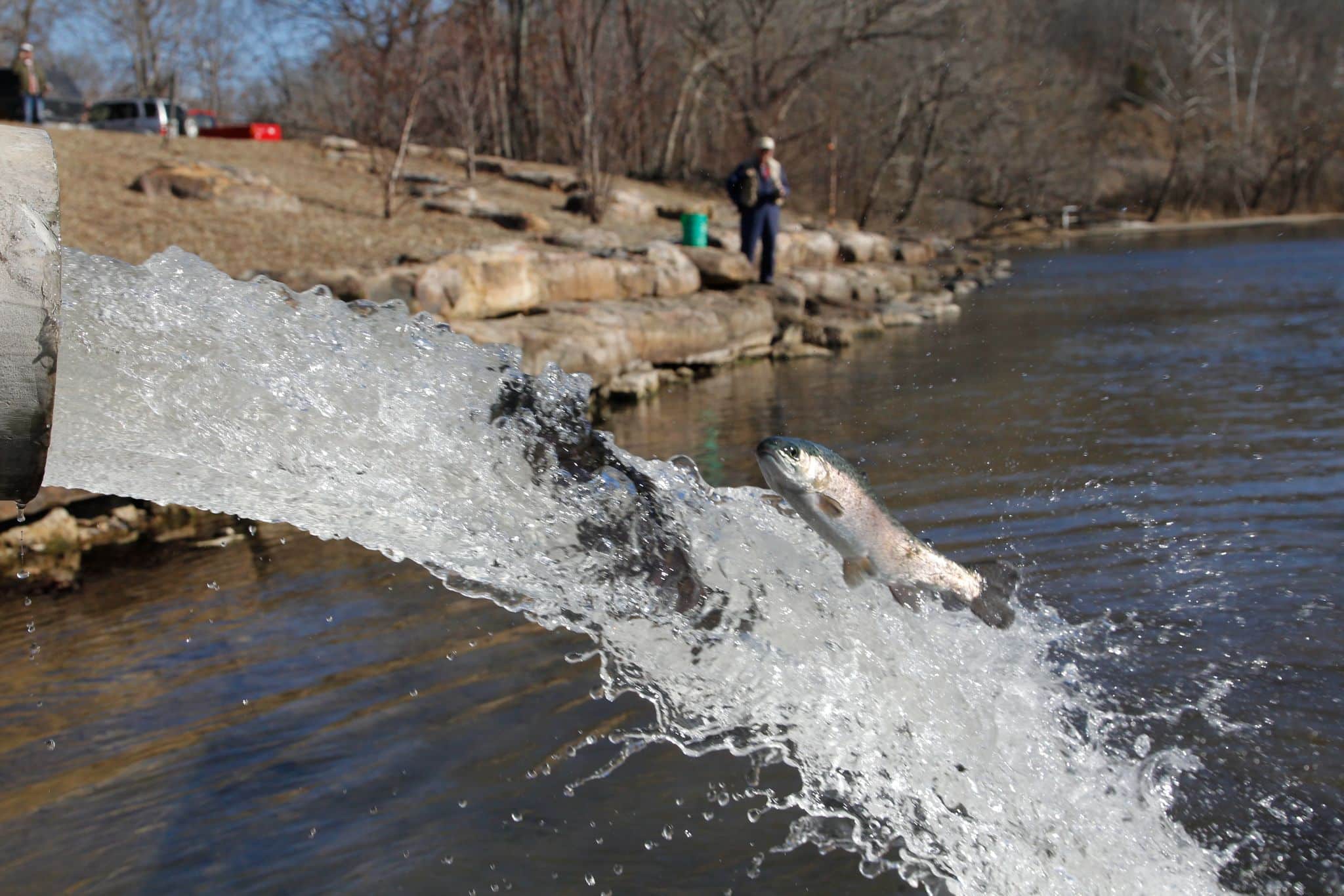
Growing memories
Anyone who’s had a chance to visit one of the AGFC’s four warmwater hatcheries during Free Fishing Weekend knows how much work and dedication staff have in growing catchable-size channel catfish. Each year the hatcheries open their doors for one day so people can chase catfish during a special fishing derby to celebrate the event. But that’s just a tiny sample of the catfish angling opportunities provided by the hatcheries. Last year, the AGFC stocked 418,301 channel catfish throughout the state. Roughly half of those fish were grown out to catchable size to be used in fishing derbies, special events and to support dozens of Family and Community Fishing Program locations throughout spring and fall.
“Just like the rainbow trout, those catfish are ready to catch the minute we put them in a lake or pond,” Miller said. “Our process is just the same as many commercial catfish farms, so the fish you catch are great for the supper table, too.”
Walleye roundup
The annual walleye project at C.B. “Charlie” Craig Fish Hatchery in Centerton boasted a great year for production of these river-loving members of the perch family. Fish borrowed from the Kings River produced an impressive 799,235 walleye that were stocked in Lake Fort Smith, Beaver, Norfork and Bull Shoals lakes.
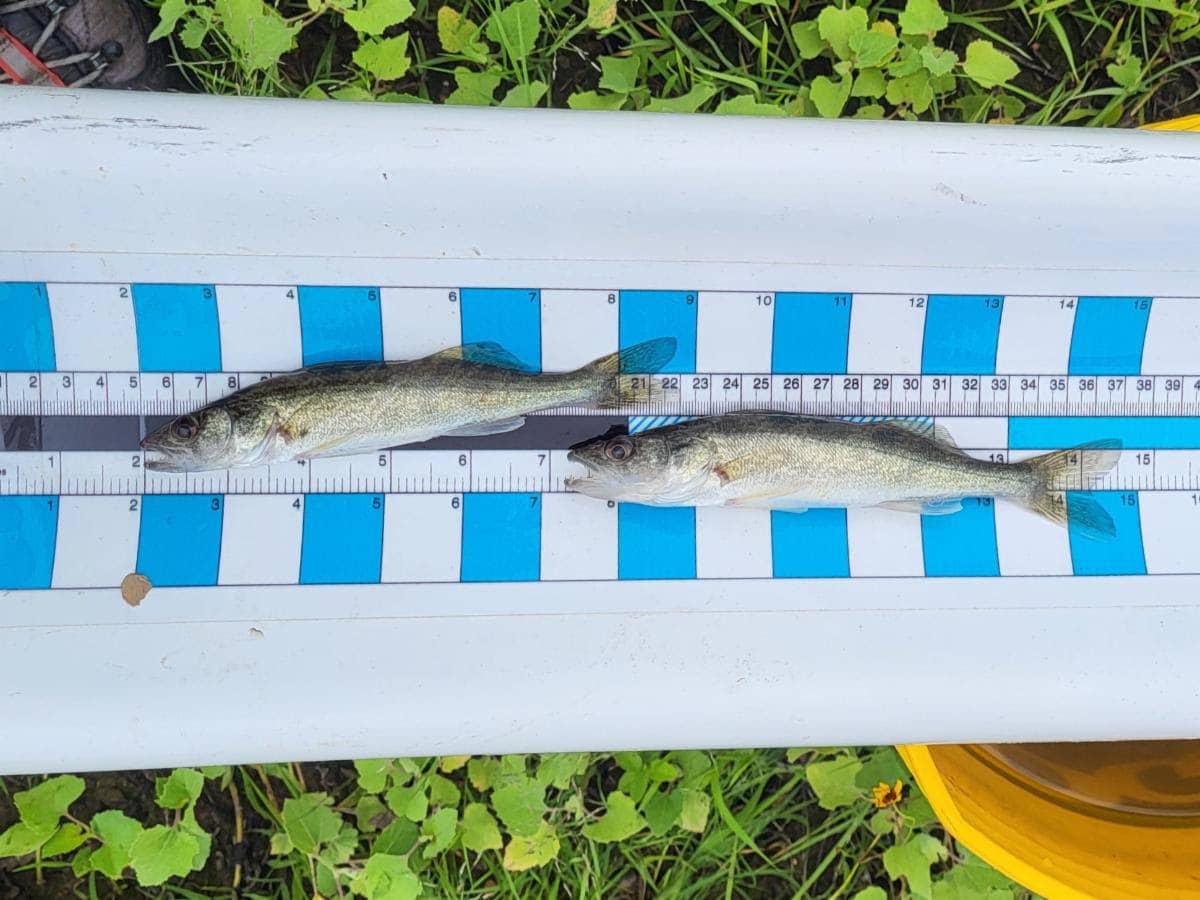
“A lot of those fish went to the Bull Shoals nursery pond last year,” Miller said. “We alternate where the focus of our walleye project is every year, and south Arkansas lakes should see a boost in walleye stockings in 2024.”
####
CUTLINES:
ARTIFICIAL COVER ON BARGE
Dierks Lake was one of dozens of Arkansas fisheries that AGFC biologists enhanced with artificial cover in 2023.
BRUSH ON BARGE
A new habitat barge on Beaver Lake was put to good use sinking dozens of giant brush piles to add habitat and fish attractors in Northwest Arkansas lakes last year.
DIP NET FULL OF FISH
AGFC Hatcheries stocked more than 1.9 million Florida largemouth bass last year in lakes to improve growth rate in Arkansas’s no. one sportfish.
PIPE RELEASING BREAM
Bream stockings not only serve as a boost to the food chain of a lake, but they add opportunities for panfish anglers.
PIPE RELEASING TROUT
With the help of Federal Hatcheries and the completion of the Spring River State Fish Hatchery, Arkansas’s famous trout-fishing destinations received 1.9 million trout.
FISH ON MEASURING BOARD
Walleye released from the nursery pond on Bull Shoals contributed to nearly 800,000 of this species stocked statewide in 2023.
Recent News
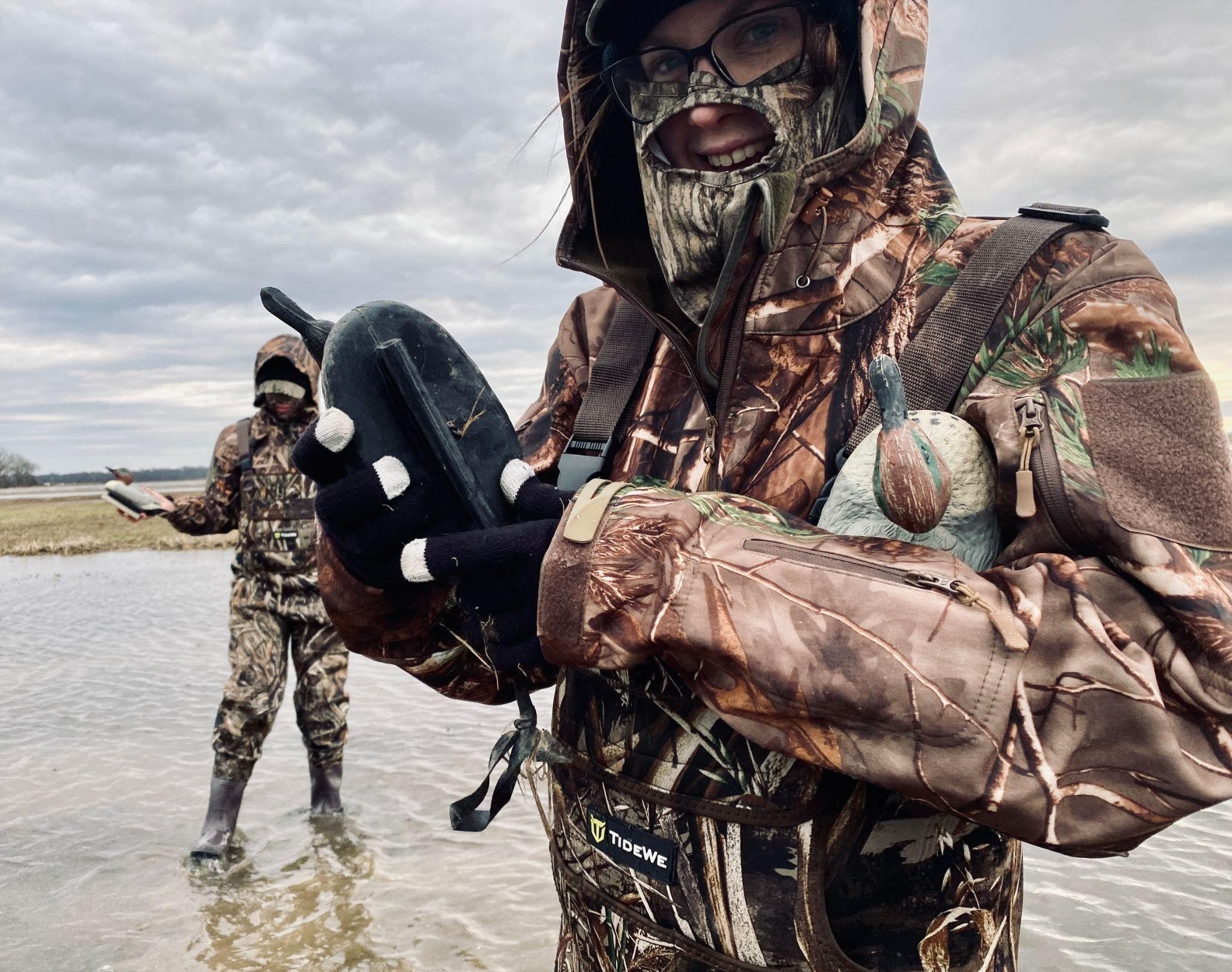
Waterfowl Report: Better Conditions Greet Hunters
Dec. 12, 2025
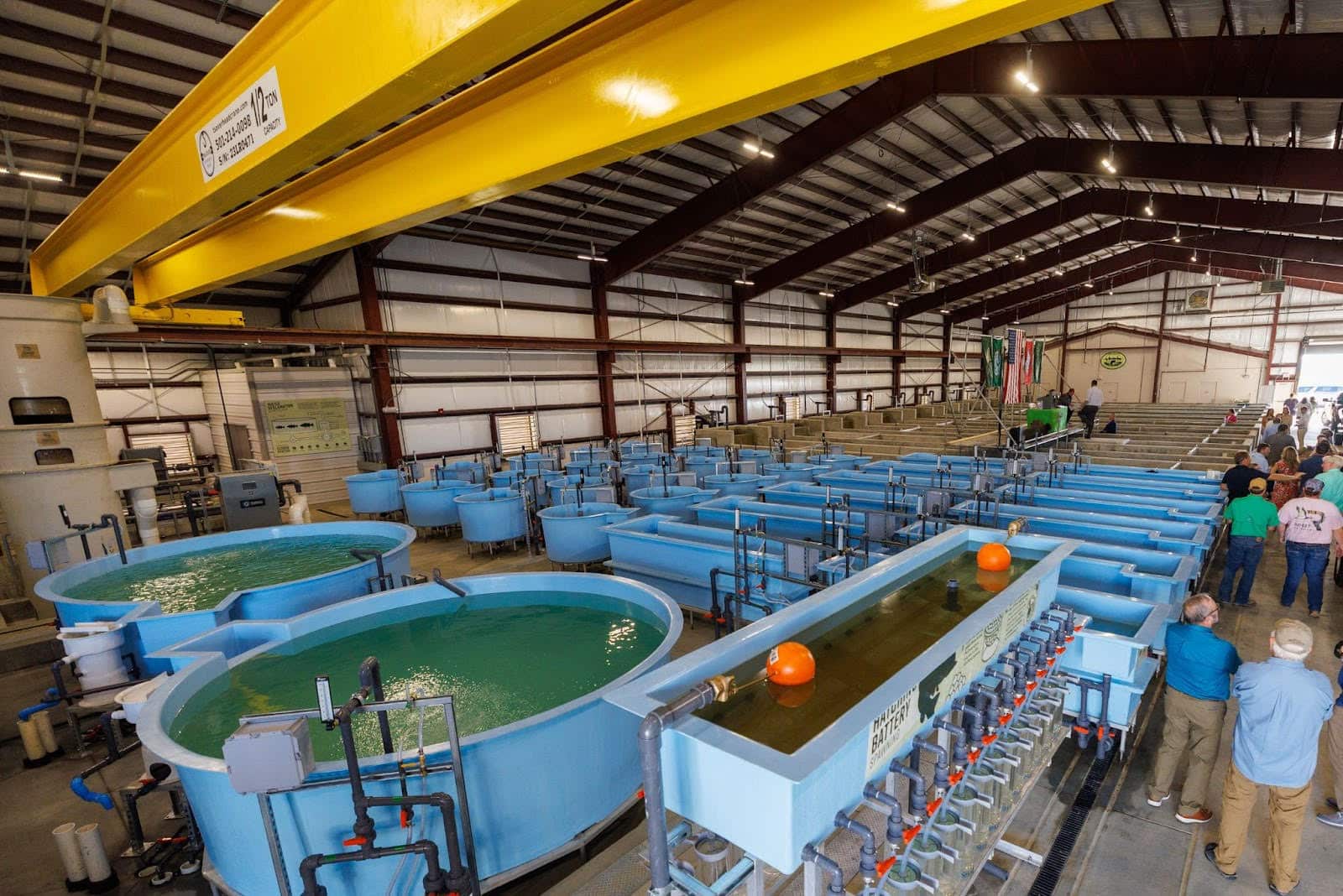
Lonoke hatchery staff making room for megabass
Dec. 11, 2025
Subscribe to Our Weekly Newsletter E-mails
Don’t miss another issue. Sign up now to receive the AGFC Wildlife Weekly Newsletter in your mailbox every Wednesday afternoon (Waterfowl Reports are published weekly during waterfowl season and periodically outside the season). Fishing Reports arrive on Thursdays. Fill in the following fields and hit submit. Thanks, and welcome!
